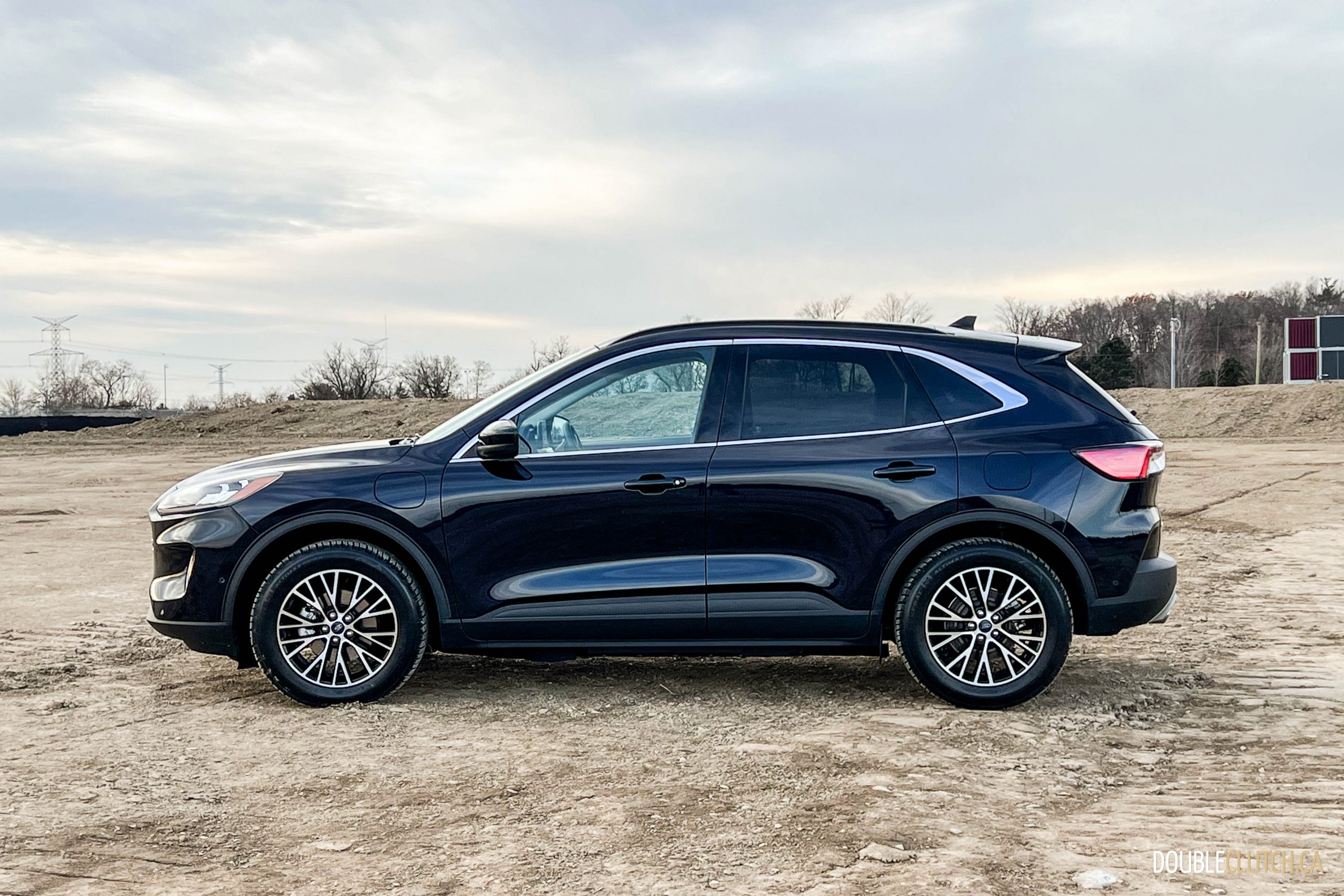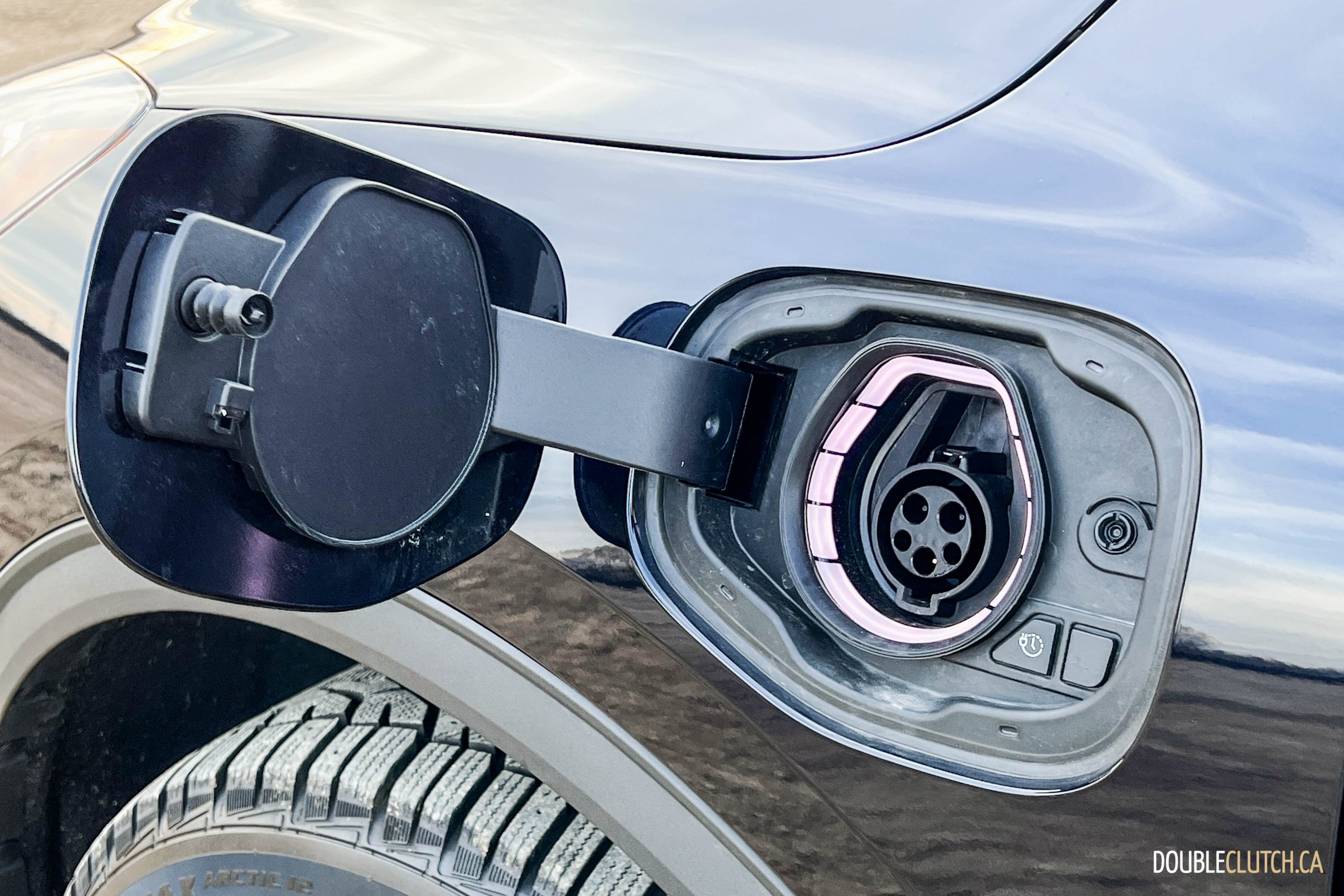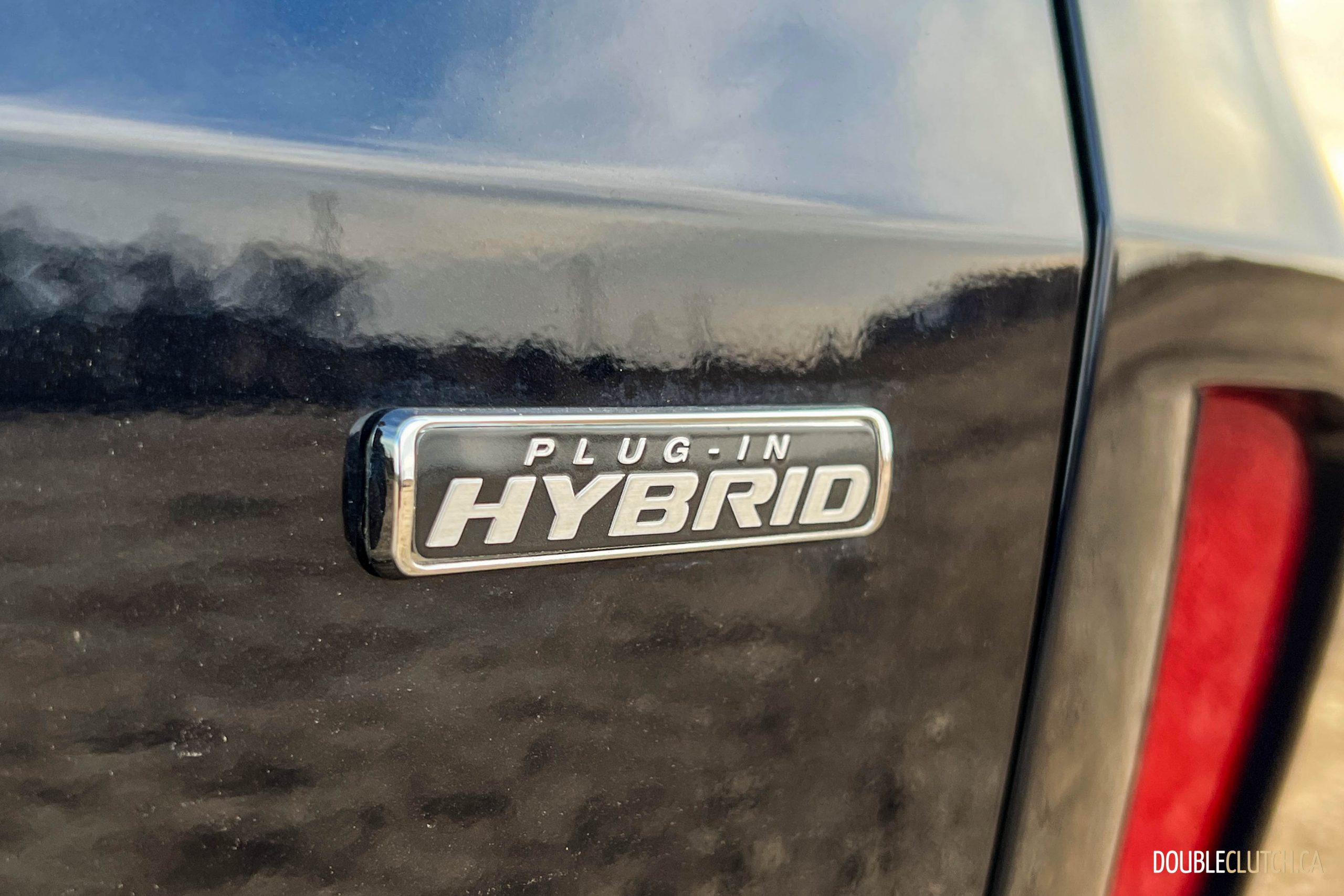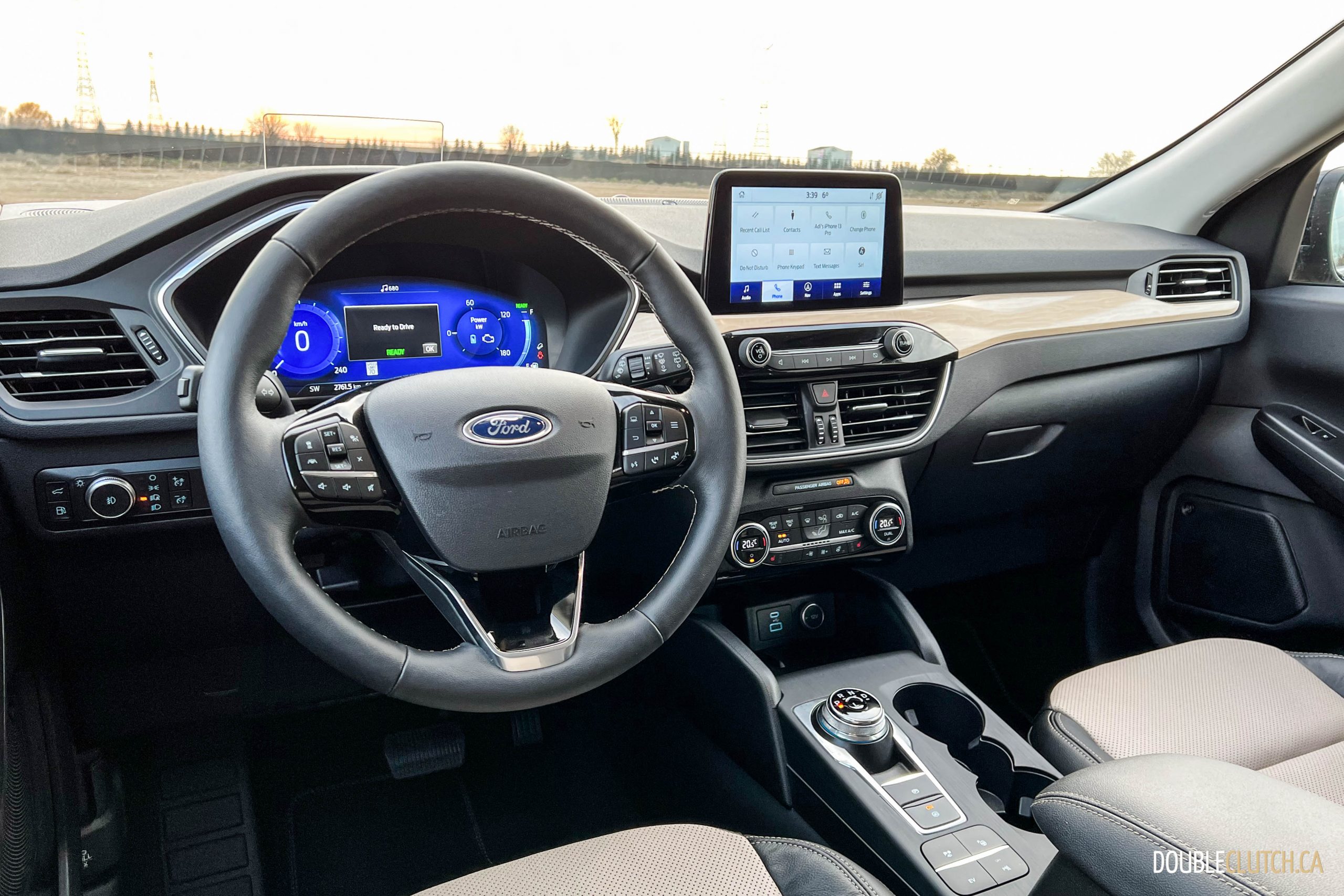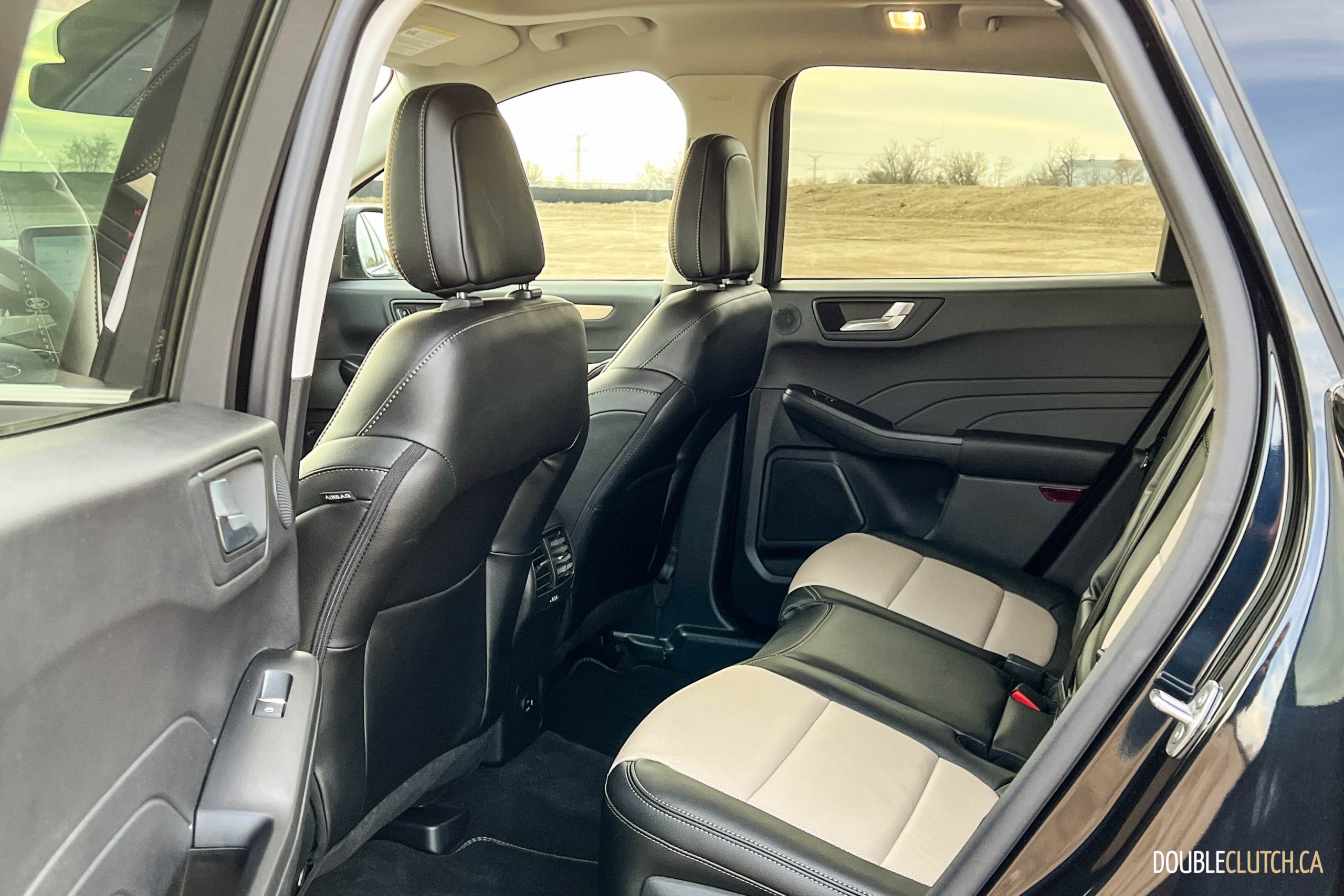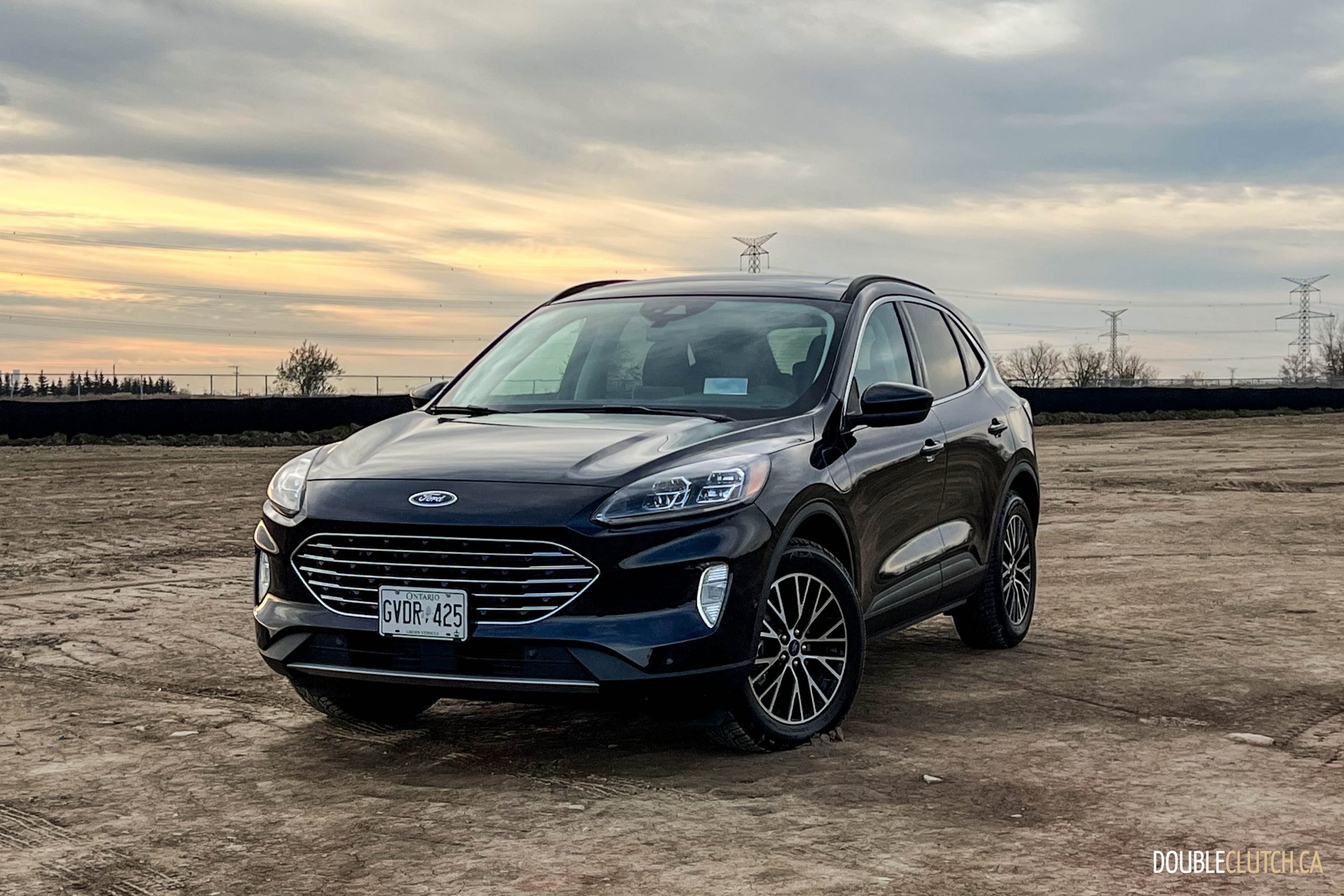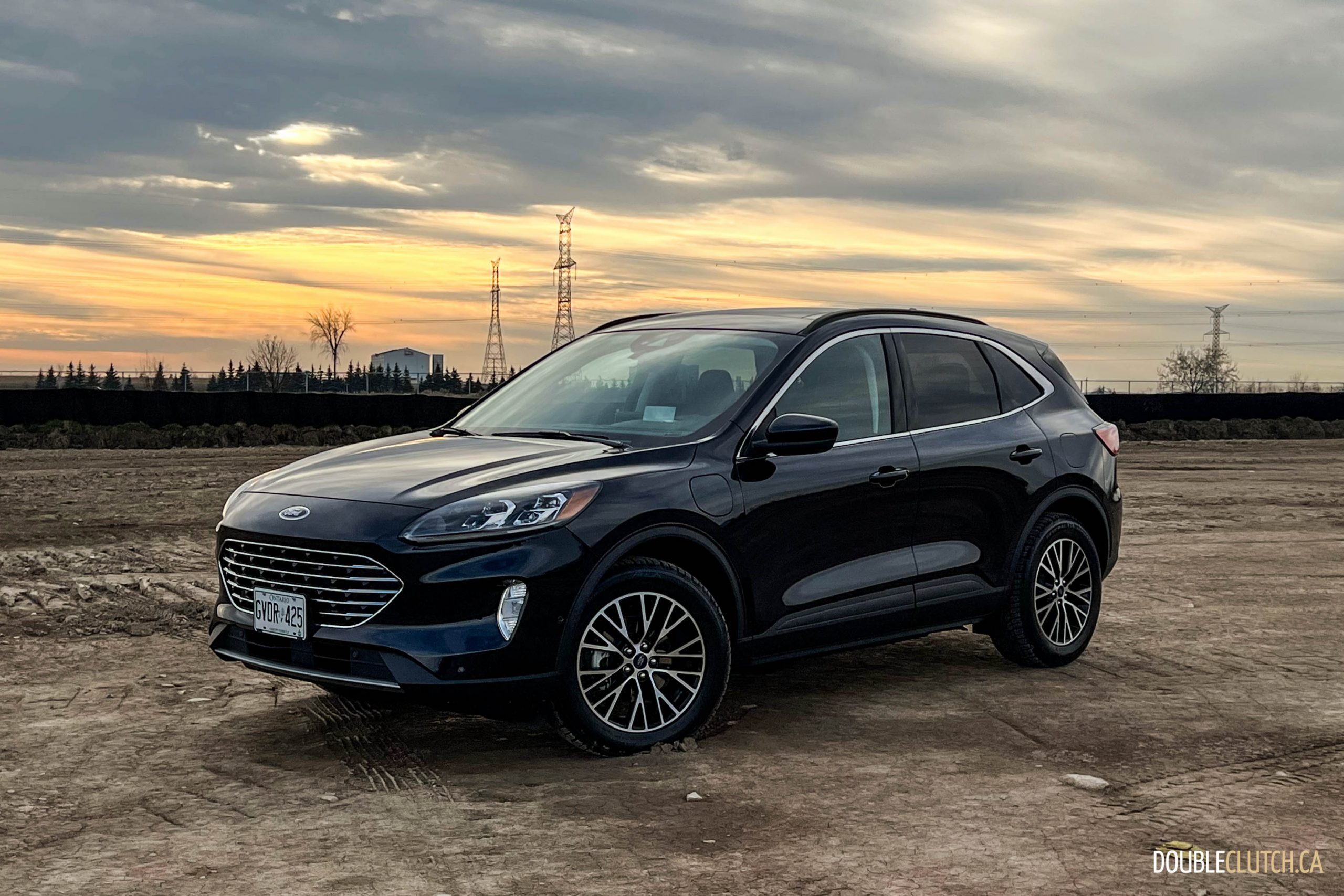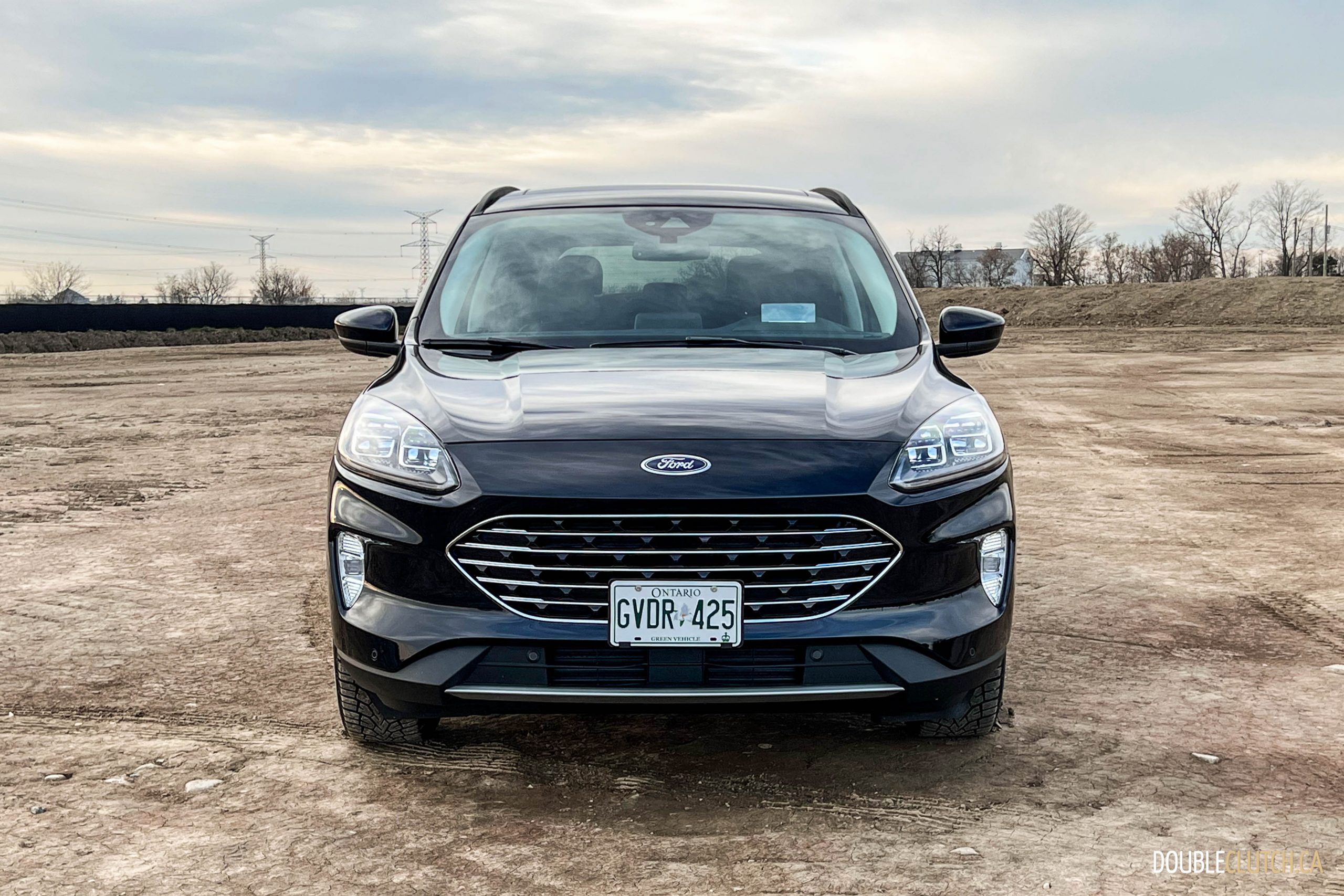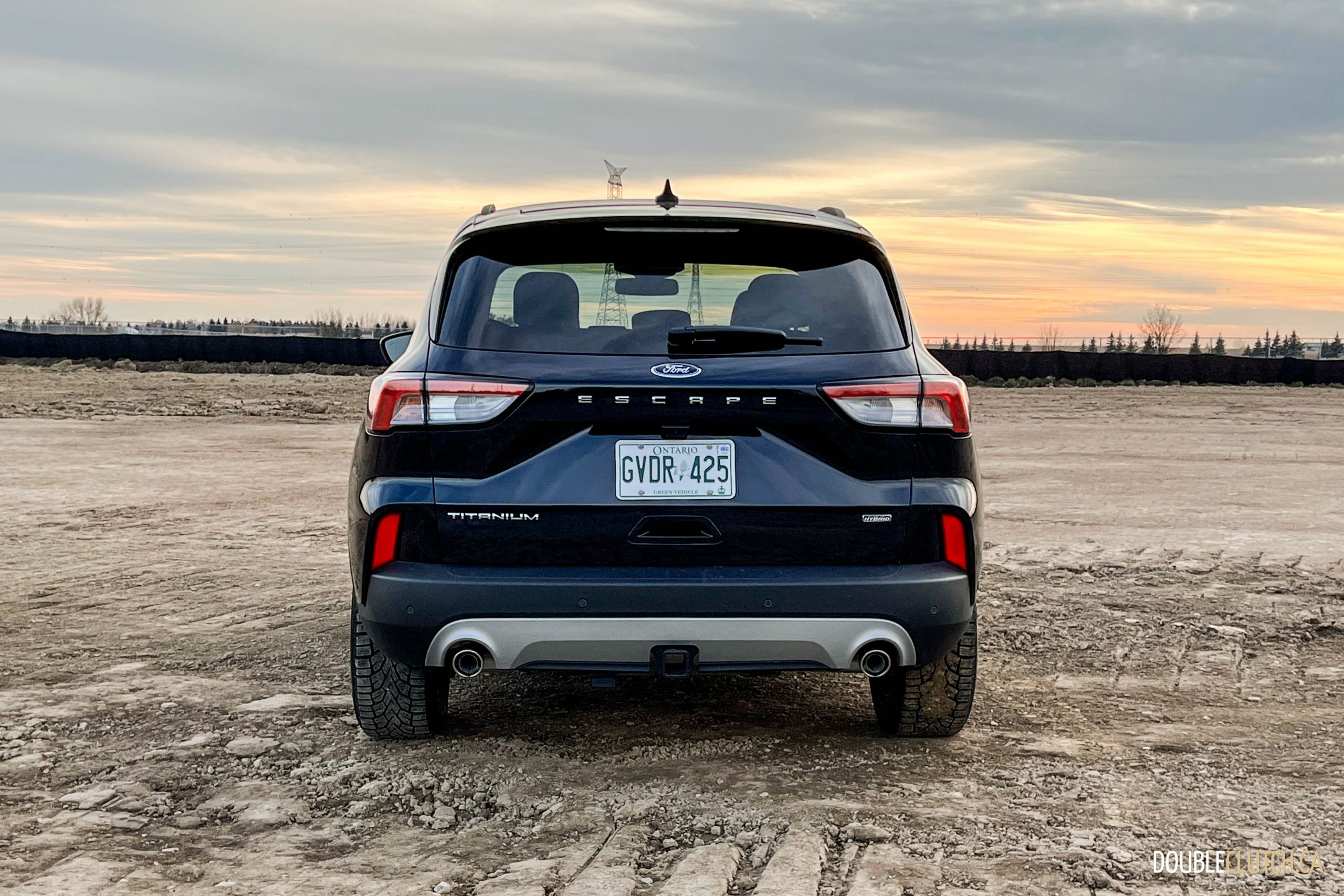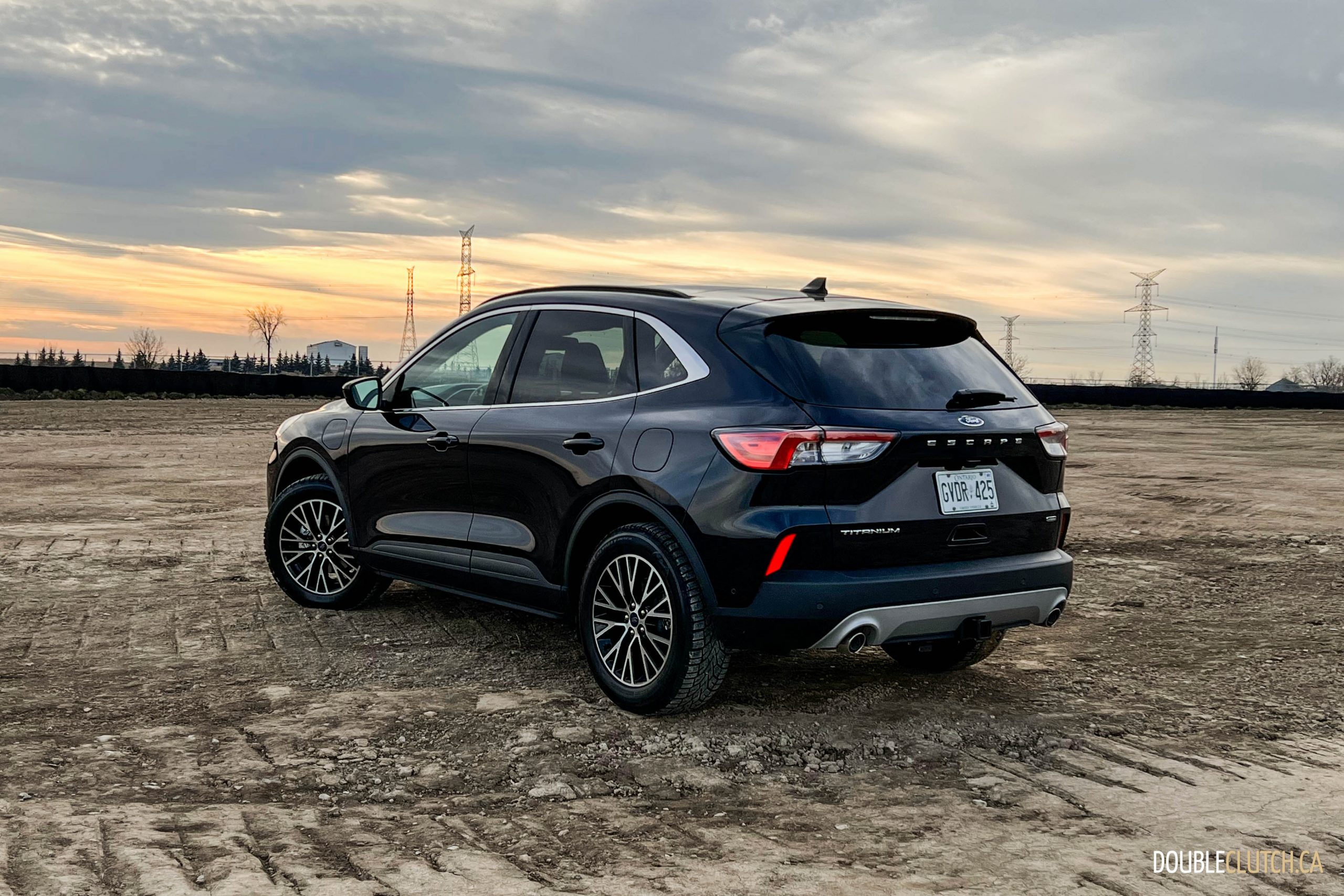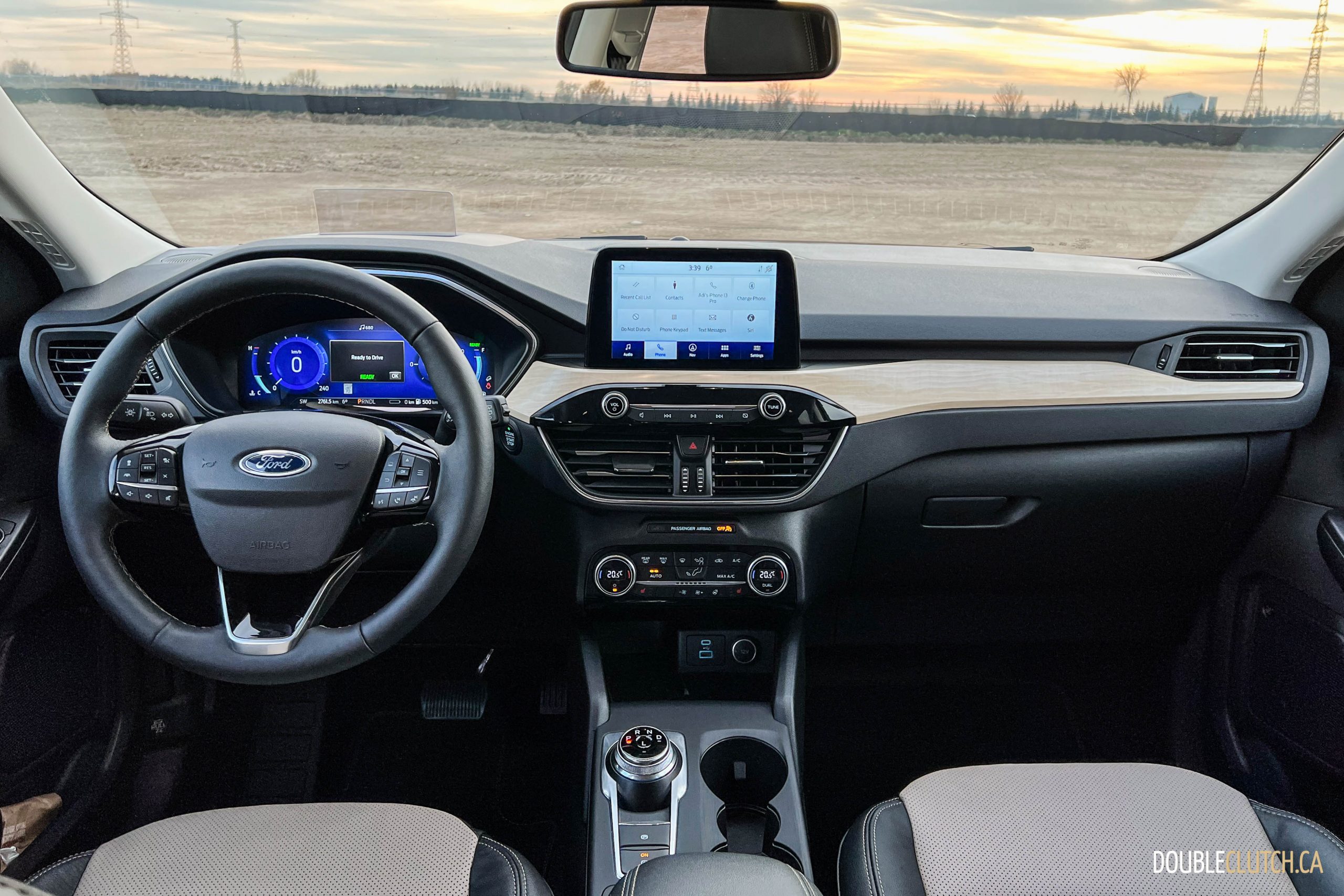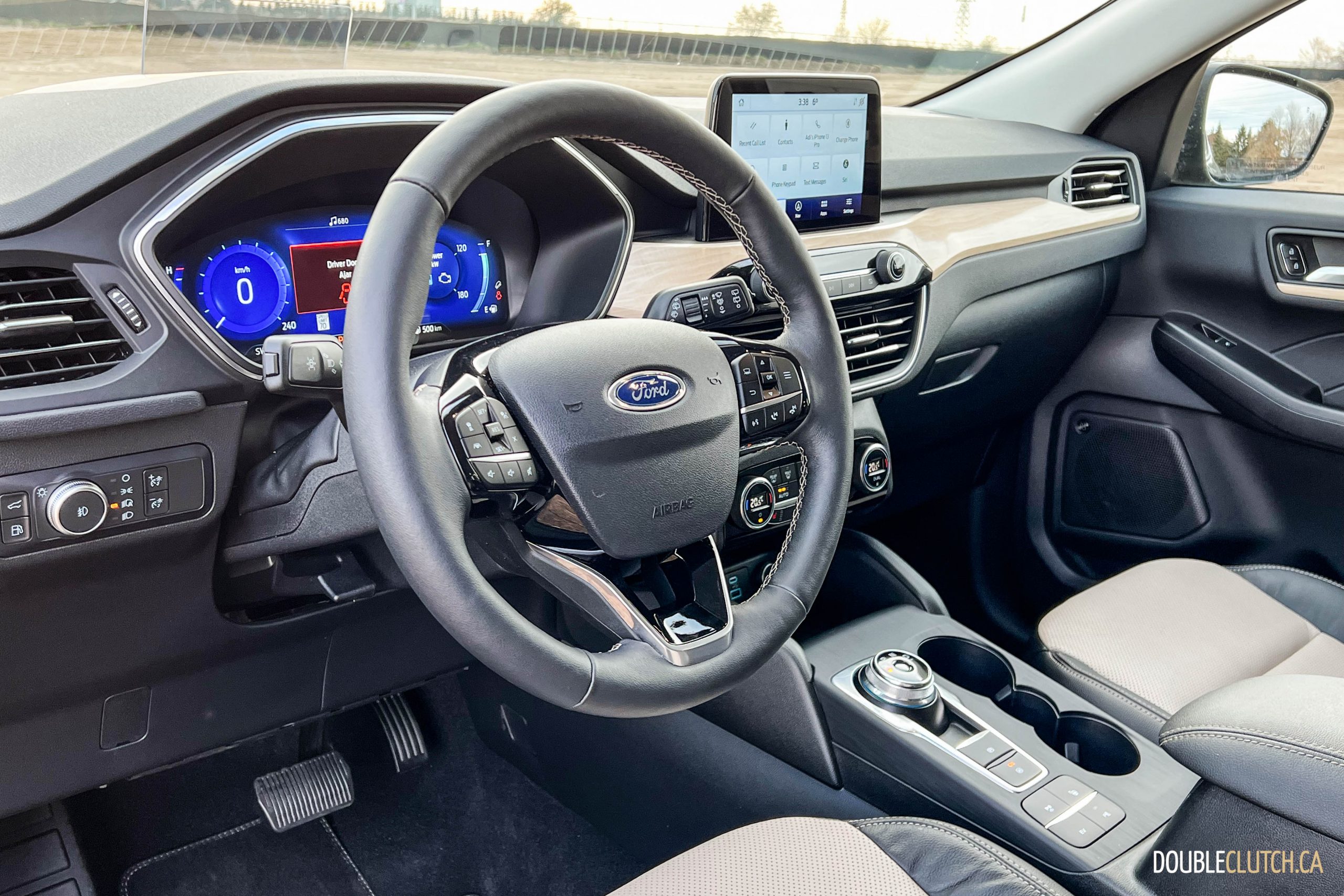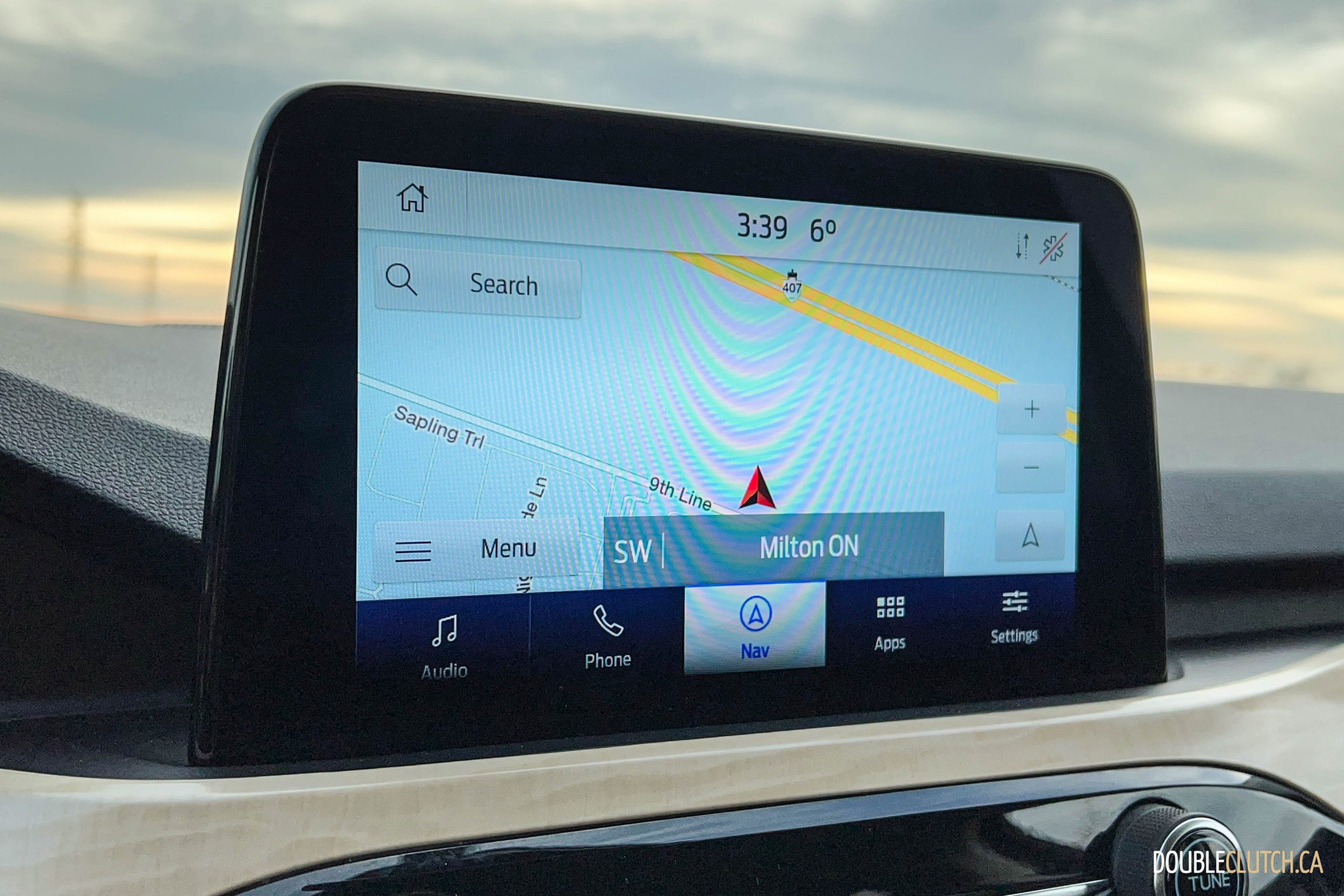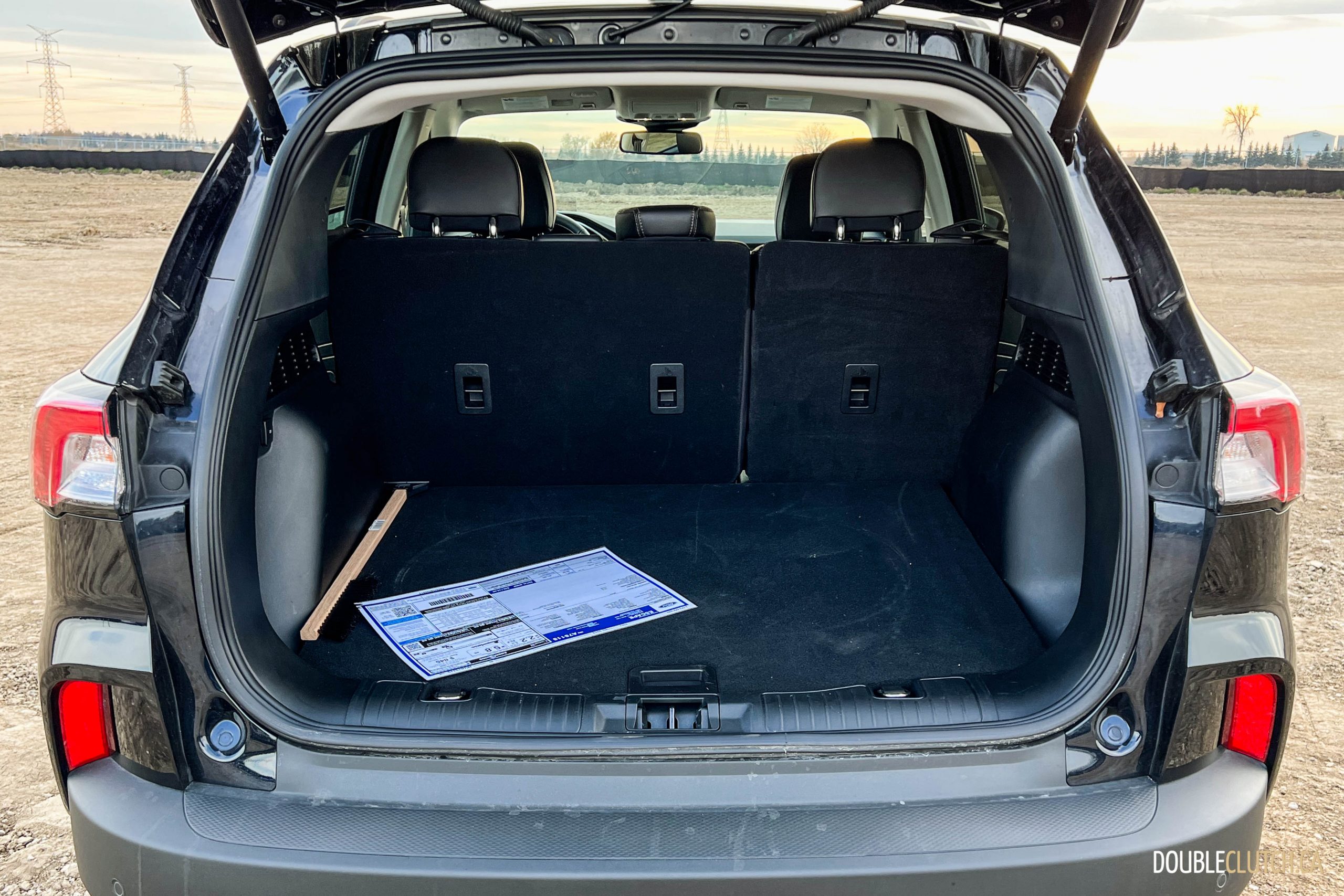After delaying the launch of its new plug-in hybrid Escape numerous times, Ford finally has its most electrified mass-market compact crossover hitting dealership lots. The Escape boasts best-in-class fuel economy; however, this comes with the sacrifice of this model being front-drive only. We spent some time behind the wheel of the range-topping 2022 Ford Escape PHEV Titanium, to see if it was worth the wait.
The Escape PHEV is fueled by a 2.5-liter inline four-cylinder engine paired with a single electric motor. That motor is powered by a 14.4-kWh battery and the whole thing produces a tame 221 horsepower at 6,250RPM and 155 lb-ft. of torque at 4,500RPM, about a 30% decrease in power from the zippy Toyota RAV4 Prime. Acceleration is quite dull to start, however at highway speeds, the gas-electric combo is just fine.
It should also be noted driving this car in full-electric mode is a bit nerve-wracking in anything other than stop and go traffic, as the acceleration in this mode lacks any sense of urgency. The engine note is reminiscent of two marbles in a tin can but luckily the cabin is well insulated and even when driving in electric mode, road noise is kept to a minimum. Equally impressive is just how seamlessly the Escape PHEV transitions between gas and electric mode.
The Ford Escape PHEV does feature marginally better fuel economy of 5.8L/100km combined versus the RAV4 Prime’s 6.0L/100km combined or the 6.4L/100km combined of the 2022 Hyundai Tucson PHEV. In our testing we managed 7.0L/100km combined and matched the 5.5L/100km figure in the city. The 60-kilometer all-electric range is certainly enough for most commutes, and while driving in the city or in traffic we were routinely able to get close to the advertised figure. With any sort of highway driving the range depletes quickly.
On a 240-volt outlet, you can expect the Escape to take three to four hours to recharge from empty and on a household 110-volt outlet we observed charge times of around 11 hours.
Overall, the Escape pleases with a planted ride thanks to the heavy EV battery being mounted at the lowest point, making highway on-ramps and corners pleasant. The steering feel is also surprisingly good; nicely weighted and with solid on-center precision, meaning that longer highway drives and straight back roads are a breeze. The brakes are nice and firm thanks to regenerative braking, not to mention trying to continually best your previous “brake coach” score turned into a fun activity amid never-ending city traffic.
Our range-topping Escape Titanium came with every box ticked off on the option sheet. This included the Titanium Premium Package for $2,300 adding niceties such as the head-up display, leather-wrapped steering wheel and panoramic sunroof, or Vista roof as Ford calls it. The whole Escape PHEV line-up comes standard with Ford Co-Pilot360 Assist, which includes blind spot monitoring and lane keep assist. The Titanium trim bumps that up to Co-Pilot360 Assist+, which includes adaptive cruise control and is available as an option on the SE and SEL trims for $850.
In our experience the adaptive cruise on this model worked well, however the lane centering needs a little bit of work as when the car loses sight of the road markings for even a moment it tends to veer abruptly left or right. Some other highlights of this particular tester were the upgraded 12.3” digital gauge cluster and the 10-speaker Bang & Olufsen sound system. Active Park Assist 2.0 is also featured and is a Titanium only feature.
The dash layout, albeit a little plain, is easy to use. One thing we did long for was a physical home button for the center infotainment screen as the on-screen one is placed awkwardly in the top left of the screen, making it difficult to press over bumpy roads. Speaking of infotainment, our tester was equipped with SYNC 3, and an optional navigation system. All trim levels come standard with Apple CarPlay and Android Auto.
Material quality is okay and generally all contact points are soft touch, except for the all-important center console knee area – ouch. However, with a base price of nearly $40,000 and the Titanium trim starting at nearly $44,000, the interior is a bit of a letdown. For example, even Roger Smith would’ve found the embarrassingly cheap “wood” trim particularly heinous. It seems like overall, there is a bit of hodgepodge of premium and basic materials. The switchgear all feels good, and it is a nice touch that the heated steering wheel and the heated seats in the front have memory.
However, some of the ergonomics are a little awkward, such as the start button angled towards the steering column. The legroom in the back seats is good even for six-footers and because the battery is mounted underneath, it does not intrude into the cabin. There are plenty of cubbies and storage areas within the doors and even a nice storage net in the passenger footwell, which could be handy for a phone or a book. The trunk is a little smaller than the RAV4 Prime and the Tucson PHEV, however can expand to 1,727 liters when the rear seats are folded down. Handily, our tester also featured a hands-free liftgate, although it almost never seemed to work.
The exterior of the Escape PHEV is almost identical to the gas variant aside from a badge on the rear, the door for the charge port, and 18-inch aluminum and black wheels exclusive to the plug-in model. Overall, the Escape proves to be just average in the styling department. You won’t be looking back at this thing in a parking lot, but it isn’t what you’d call offensive. There are still some nice touches on the exterior of our Titanium tester such as LED headlights.
The 2022 Ford Escape Plug-In Hybrid starts at $37,649 in SE trim before government incentives. Our tester being the Titanium model came up to as tested price of $46,749, this includes the Titanium Premium package and a $600 towing package. When compared to models like the Toyota RAV4 Prime XSE, the Escape is considerably cheaper, although the Toyota comes standard with all-wheel-drive. The equipment lists are almost identical, so it seems like the question will come down to whether or not having power delivered to all four wheels will be worth the extra money.
The 2022 Ford Escape PHEV Titanium is a truly decent compact crossover which is pleasant to drive. The odd mix of technology and driving characteristics that favored highway driving combined with the drivetrain that did its best in the city mean that the Escape tries to be a jack of all trades, while being a master of none. If your commute fits within the all-electric range, it is a very reasonable option. However, the Escape seems like it’s giving up a little too much by not offering all-wheel drive. While I do believe this vehicle is a good option, the competition seems to offer a little more value.

